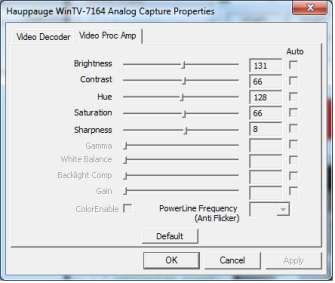Advanced Topic 13
Setup of the Video Capture and Eye Tracking Systems
Note: Review Advanced Topic 11 and 12.
NADS Video Capture System is designed to be integrated into the MiniSim, to capture video of participants drive, and store the video in such a way it can be easily retrieved afterwards.
Using NADS-VidCap
The VidCap system is used in two manners, first when properly installed it is integrated with the MiniSim and will create a new video every time a new drive is started on the MiniSim without any kind of additional user interaction. The second manner the VidCap is used is in standalone mode. This mode does not let the user record a video, but allows for the setup of the capture system. The NADS-VidCap should not be open while launching the MiniSim, the MiniSim will automatically start the VidCap when it’s launched. The video files are saved on the D:\ directory I the vid directory in the appropriate Experiment and Subject Folders. There will be four video files created every time the simulator is run, one for each video input.
Selecting channels
The “VIDCAP” buttons in the top right hand section of the vidcap application select what channels are active, if the button is depressed the channel is on, if it is up, the channel is off. You will also see a “preview” of each active channel, if the channel is active, and you still do not see an image, check your cameras, cabling, and quad split as a video channel may not be properly connected.
Video Format Selector
The video format selector is in the top center of the VidCap program. VidCap supports two video formats MPEG-2 (mpg), and MPEG-4 (mp4). The VidCap program must be restarted for changes in the video format to be made. MPEG-4 produces smaller file sizes than MPEG-2.
Camera Setup
If you click on one of the “Cam X Setup” button in the upper center part of the screen, this will launch the camera configuration window. This window will has two panels, “video decoder”, and “video proc amp”. The “video proc amp” will allow you to set the Hue, Saturation, Contrast and other video settings. Changes here will affect the capture card, and will be saved by the system.


